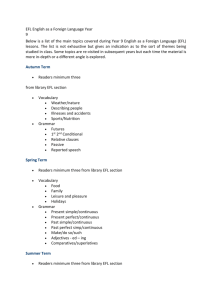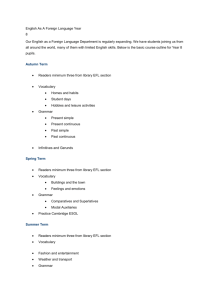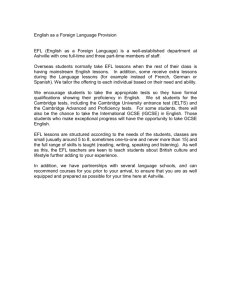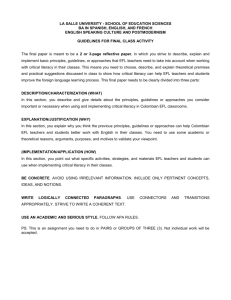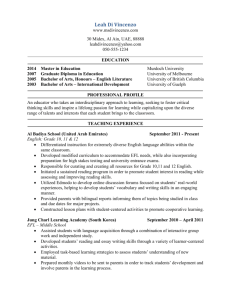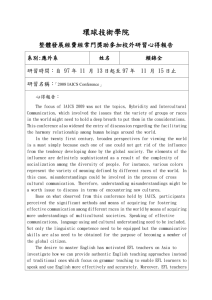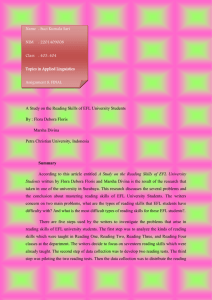textbook checklist
advertisement
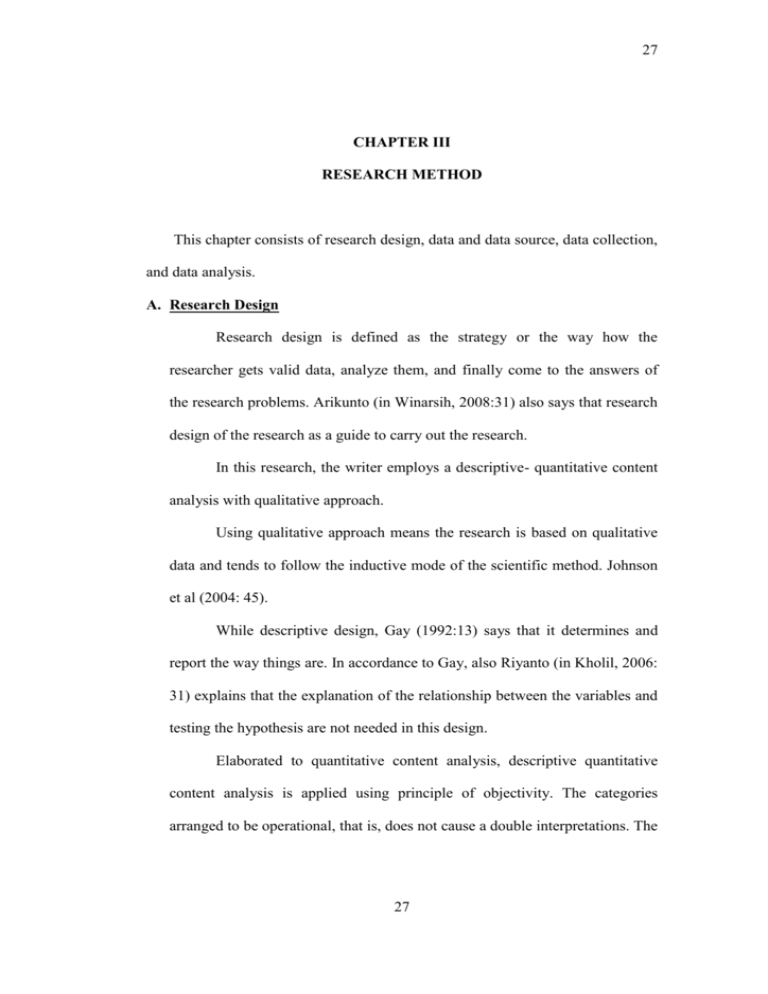
27 CHAPTER III RESEARCH METHOD This chapter consists of research design, data and data source, data collection, and data analysis. A. Research Design Research design is defined as the strategy or the way how the researcher gets valid data, analyze them, and finally come to the answers of the research problems. Arikunto (in Winarsih, 2008:31) also says that research design of the research as a guide to carry out the research. In this research, the writer employs a descriptive- quantitative content analysis with qualitative approach. Using qualitative approach means the research is based on qualitative data and tends to follow the inductive mode of the scientific method. Johnson et al (2004: 45). While descriptive design, Gay (1992:13) says that it determines and report the way things are. In accordance to Gay, also Riyanto (in Kholil, 2006: 31) explains that the explanation of the relationship between the variables and testing the hypothesis are not needed in this design. Elaborated to quantitative content analysis, descriptive quantitative content analysis is applied using principle of objectivity. The categories arranged to be operational, that is, does not cause a double interpretations. The 27 28 quantitative principle here is that messages that appear must be quantified to obtain frequency counts messages intended. (Ida, in Bungin, 144: 2003). B. Data and Data Source Data is information on the phenomenon to be recorded (Krippendorff, 1980: 83). The data of this research is English textbook used by first grader of senior high school level “Look Ahead” published by Erlangga. The book is chosen because: The book is published and since 1952; The book is practically used based on school based learning 2006 (published in 2007); 1. The books published to be a quality and achievable textbook; 2. The book will be used widely by teachers and students in Indonesia, especially in Tulungagung. English starts to be a compulsory subject since senior high school for first grader. Also it can be used as a first step in preparation for the national final exams. C. Data Collection The data for analysis was collected from “Look Ahead”. Because the source of the data is in the form of document, the method used to gather data is called Documentation Method (Arikunto in Riduwan, 2008:105). The instrument of data gathering is called checklist. The data was collected by identifying the content of the book based on certain checklist. The checklist used in this study is the EFL textbook evaluation criteria. The procedure of data gathering consists of two steps. First, find the English textbook that will be evaluated, “Look Ahead”. Second, use random techniques to obtain samples from each chapter. Third, gather the data from the book based on the checklist. D. Data Analysis After collecting the data, the next step is analyzing the data. The content of “Look Ahead” was analyzed based on EFL textbook evaluation criteria. According to Ary (in Winarsih, 2008:31), qualitative research focuses an understanding the social phenomena from the perspective of the study. The aim is to describe “what exists” with respect to conditions in situation. Moreover Sukmadinata (in Pusporini, 2009: 20) describes that some descriptions are used to find some principles and explanations which are heading to a conclusion. Based on the theory, the data is analyzed using qualitative data analysis. The writer describes the content of the data based on the EFL textbook evaluation criteria. The EFL textbook evaluation criteria used in this study is based on the criteria of Jahangard (in The Asian EFL, June 2007). The criteria are chosen because they have been summarized from 10 different sources and tried out to evaluate textbooks. However, the writer omits two criteria which are not applicable for this study. “Approaches educationally and socially acceptable to target community.” is not applicable because it needs further studies i.e. about which part of grammar is easier to be given in the first chapter and “Interesting topics and tasks” is not applicable because it needs students’ opinion about the topics, while the book is not yet widely used. The criteria also applied by the former researcher, that is, Nuryantiningsih Pusporini (2009) in “A Content Analysis on English e-Book for Junior High School Grade VII, ‘English in Focus’.” Below are the criteria used for analysis and the descriptions: Table 3.1 The EFL Evaluation Criteria and the Description Chosen EFL Evaluation Criteria 1. Objectives are explicitly laid out in an introduction, and implemented in the material Description The objectives are given in the beginning of the book and each chapter The objectives are suitable with the official syllabus (standard competency and basic competency) The topics and materials are suitable with the objectives 2. Good vocabulary explanation and practice 3. Approaches educationally and socially acceptable to target community Periodic review and test sections There is a vocabulary section in each chapter Vocabulary section consists of lists of words and their definitions based on the context used There are vocabulary practices in each chapter Structure, function, situation, topic, skills which are reasonable, so that can be logically acceptable in community. There is review section at the end of each chapter There are periodic test sections in the book 4. 5. Interesting topics and tasks 6. Appropriate visual materials available 7. Clear instructions 8. Clear attractive layout, print easy to read 9. Content clearly organized and graded 10. Plenty of authentic language 11. Good grammar presentation and practice 12. Fluency practice in all four skills 13. Encourage learners to develop own learning strategies and to become independent in their learning The topics of readings vary from factual to anecdotal ones and sometimes are funny stories. There are visual materials available from the book, such as charts, pictures, movies, etc which are relevant with the topics The instructions of the exercises or practices are clear and easy to understand, in terms of completed by examples and/or given in the learners’ native language The words are correctly spelled and clearly printed It consists of colorful pictures of real people and real environment Each chapter is organized as below: o Introduction: objectives o Materials: practices and exercises o Review: summary of materials Texts given in the book should at least consist of: o Recount: orientation and sequence of events o Narrative: orientation, complication, and solution o Procedure: systematic steps, implicitly or explicitly mentions the ingredients/ things needed o Descriptive: descriptions of the nature of people/things/animals which are related to their social function and context There are authentic materials in each chapter There is a grammar presentation in each chapter There are grammar practices in each chapter Each chapter should consists of four skills Each skill in each chapter should be completed with fluency practices The book provides activities to enable students to use the language independently Source: Jahangard, 2007 Before entering the data analysis, first the small papers are needed to choose the random sample for each unit from the book will be analyzed. Intentionally, fourteen of small papers which contain the number of the unit of the book are shaked and what number dropped, that is the unit will be analyzed by using the criteria based on its order. Everything is done in random. After analyzing the data based on EFL evaluation criteria, the writer can explain which of the criteria are already met by the book. The next step is concluding the result of the analysis in the terms of explaining the reasons why each criteria considered to be relevant or not. The thorough descriptions will be employd to avoid misunderstanding for each.
